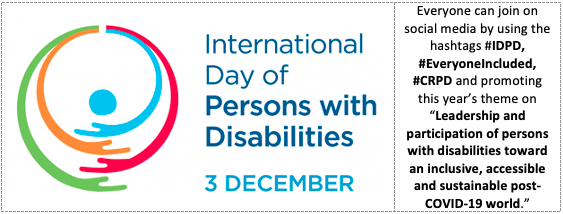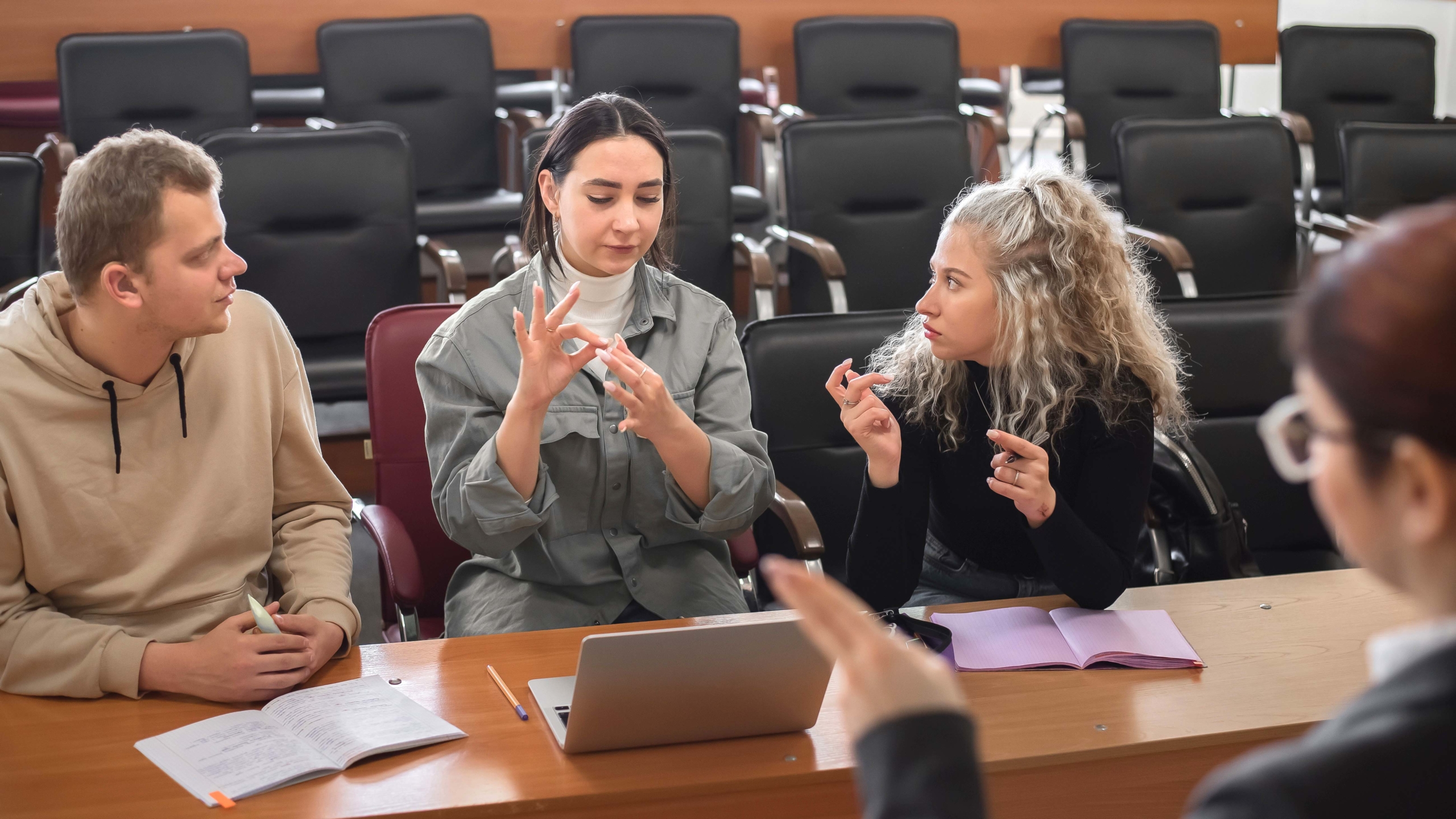By Troy D. Keller, Director of Special Education, Frederick County Public Schools
At its core, disability inclusion is the recognition that we are all human.
December 3rd is International Day of Persons with Disabilities (IDPD) sponsored by the United Nations. The United Nations website states, “The annual observance of the International Day of Disabled Persons was proclaimed in 1992. It aims to promote the rights and well-being of persons with disabilities in all spheres of society and development, and to increase awareness of the situation of persons with disabilities in every aspect of political, social, economic and cultural life.”
The theme for IDPD this year is “Leadership and participation of persons with disabilities toward an inclusive, accessible and sustainable post-COVID-19 world.”
By Troy D. Keller
Director of Special Education
Frederick County Public Schools
According to the Centers for Disease Control and Prevention, one adult in four in the United States has a disability. That includes invisible disabilities as well as visible ones. Across the world, more than one billion people, or approximately 15 percent of the world’s population, live with some form of disability; 80 percent live in developing countries. These are stunning statistics. Some people have disabilities from birth, while others acquire them due to accident, aging, injury, or illness. Certain disabilities are obvious because they require use of a wheelchair or have noticeable physical attributes. However, most disabilities, including those related to learning, attention, mental health, or chronic pain, are invisible and many people with invisible disabilities are still “in the closet” due to stigma.
In the United States, three federal laws protect the rights of people with disabilities and ensure their inclusion in many aspects of society:
- Section 504 of the Rehabilitation Act of 1973
- The Americans with Disabilities Act (ADA) of 1990, which was followed by the ADA Amendments Act of 2008
- The Patient Protection and Affordable Care Act in 2010
Despite these laws, individuals with disabilities continue to face barriers in many environments, including the adult workplace. As a public-school Special Education educator, I have seen how barriers as students grow into adulthood can affect them beyond their schoolhouse years. It shouldn’t be that way. Let’s remember that disability inclusion is the act of making sure everybody has the same opportunities to participate in every aspect of life to the best of their abilities and desires, for children, youth, and adults.
As we celebrate International Day of Persons with Disabilities, my hope is for us to remember that inclusive practices don’t stop the minute our students become adults; those practices are still critical for their next steps in college, career, and life. What can we each do to show support? Below are 3 simple things anyone can embrace and champion to support Disability Inclusion for the adults in our own organizations and lives.
Work to overcome unconscious bias
Inclusivity isn’t an issue just for people with disabilities; it’s important for everyone in an organization. Lead the charge to set the goal and expectation for a diverse and inclusive culture and ensure there is a follow up with education aimed at promoting understanding and awareness of unique challenges of people with disabilities as well as the importance of inclusion. For example, urge your organization to adopt a policy of using people first language. People first language is a way of communicating that shows respect for people with disabilities by focusing on the individual and not their disability. This recognizes that they have disabilities and allows you to be inclusive and respectful in your planning but doesn’t use their disabilities to define them entirely.
Have Patience
If you find yourself feeling frustrated by someone with a disability, realize this: they feel your frustration but to a much greater degree. Their disability might affect you for a few hours a day. However, it’s something they must carry with them everywhere they go. Understand that people with disabilities are not helpless, but they may need certain accommodations. By being patient, you can show them just how much you value them. If you have any concerns, you should address them in a private manner and recognize them for what they do well – same as you would do for anyone. Further, be an advocate for people with disabilities. If you hear someone expressing an insensitive opinion about a disabled individual, don’t be afraid to take a stand and show support.
Create a Mutually Supportive Community
Is your organization’s environment one where everyone feels safe, included, and comfortable speaking up when the need arises? For any disabled adults, there should be proper accommodations and respectful treatment. By ensuring the environment is one of decency and respect, you can foster organizational pride. Do everything you can to treat every adult with respect and never stop seeking more education and insight to make sure the environment consistently adapts to be the most positive atmosphere for all. Training and opportunities to connect with others will help ensure that individuals with disabilities develop and succeed.










